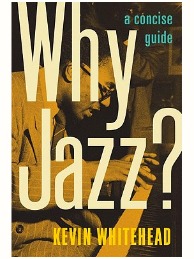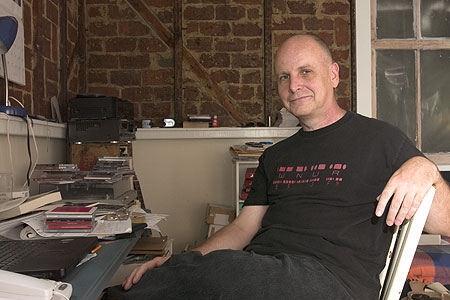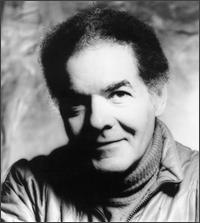Fuse Book Review: Why Jazz? How Now?
People who love jazz should read jazz history books periodically, and Kevin Whitehead, jazz critic on NPR’s “Fresh Air” with Terry Gross, has done a great service in giving us a What, Who, Where, and When book with insight and ingenuity.
Why Jazz?: A Concise Guide by Kevin Whitehead. Oxford University Press, 136 pp. of text, 35 pp. of endnotes (Glossary, Footnotes, Discography, Suggestions for Further Reading, and Index). SRP: $17.95 ($13.29 via amazon.com; $17.99 via tower.com; $17.95 via borders.com and powells.com; E-book version available for $9.99 via amazon.com; $9.99 via Google eBook; $14.95 via ebooks.com)
By Steve Elman.
Kevin Whitehead has claimed the title that I hoped to use someday when I write my jazz book. Let’s face it, Why Jazz? is a grabber and a damn good one. Oh, well.
But this isn’t really a Why book. Like other surveys of jazz history, this is primarily a What, Who, Where, and When book, with a bit of not-too-technical How. The reason Whitehead puts the Why up front is because he wants to proselytize a bit—as all jazz people secretly want to do—to get more worshipers into the temple and to make sure they don’t mistake Kenny G for the real thing. The book’s first words put the title in context and frame the topic more accurately: “Why listen to jazz?”
However, that question only leads to the book’s mission indirectly. The jazz critic on NPR’s Fresh Air with Terry Gross, Whitehead says his goals are to “tune in” novices and to “tune up” veteran listeners with a historical overview in the form of a series of questions and answers. The objectives are perfectly admirable, but they have little to do with the Why of jazz. Later for that.
Whitehead poses many substantive and important questions about the origins of the music, its substance, its major innovators, and its principal ebbs and flows. His answers are mini-essays on these topics, most of which have been carefully pared to a minimum of clear and smart words. “Jazz is about variations.” “The arena-rock drum solo starts here [with Gene Krupa’s work on Benny Goodman’s ‘Sing, Sing, Sing’].” “Pure bebop is beautiful but severe.” “No one had a more recognizable, atomistic style than [Derek Bailey].”
The brevity of this book ought not be confused with a lack of substance. Whitehead’s tone is conversational, engaging, and direct, and he deserves plenty of credit for an original concept (the Q & A format) in the What, Who, Where, and When department. He also breaks some important new ground, and for that he deserves a full measure of applause. He is dedicated to the proposition that jazz is a continuum of continuous development rather than a timeline of battling genres. He does a very good job of showing how the avant-garde movement of the sixties had some notable and valuable antecedents. He gives plenty of space to non-American musicians. He’s open and aboveboard about his own biases, saying that he was among the “white critics who questioned” Wynton Marsalis’s programming of Jazz at Lincoln Center.
But perhaps the best thing for me about the book is the ambition of the last chapter, “Jazz After 1980,” in which Whitehead sorts out the trends and innovators of the past 30 years in just 27 pages—a remarkable achievement that shows how carefully he listens and how cogently he judges.
I have some problems with some of his language. There are some regrettable mixed metaphors that speak to inattentive editing (“a new spin on an old tack”). His attempts to characterize styles don’t always work (he describes Artie Shaw’s clarinet as “pealing,” but I never heard bells when listening to Shaw; he praises Ben Webster for blowing “tenor sax smoke rings,” but that image seems trite and ill-conceived at the same time.)
There are a couple of factual missteps (Whitehead says Ellington was “always Duke, not ‘the Duke,’” but one of Dave Brubeck’s most famous and beautiful tunes used those exact words as its title). He uses “bespoke” a couple of times where a less archaic word (“displayed”? “demonstrated”?) might have served him more effectively.
More than these quibbles, I am concerned about a couple of Whitehead’s substantive decisions. I am baffled by the short shrift he gives to George Russell. Anyone who knows my work on the radio or in print will know that I revere Russell’s theoretical contributions and rank his compositions with those of Morton, Ellington, Monk, and Mingus. So this may be just a case where well-meaning partisans disagree. But don’t Russell’s monumental insights about harmony and his brilliant extended works entitle him to at least as much ink as is given to Artie Shaw and Sun Ra? And leaving out Russell’s influence among Scandinavian musicians during his long stay in Europe is a very serious oversight.
Secondly, perhaps more importantly, I carry a brief for emotional response to jazz that Whitehead may find suspect, and this gets us back to the Why. For my taste, there is just not enough gut-level engagement with the thrill and beauty of the music in these pages. When he answers the question “Why listen to jazz?” he begins, “It’s fun to listen to. Everything else follows from that.” These are the first words in the book, and he surely must have thought long and hard about them. Fun? Sure, of course it’s fun. But I didn’t become passionate about jazz because it was fun. Maybe Whitehead is so concerned with attracting the attention-deficit crowd that he doesn’t want to scare anyone off.
If someone asked me that question, I would say, “Because no other music, and maybe no other art, will make you feel the things that jazz will make you feel, if you open your mind and listen with both ears. Because virtually no other music involves you so deeply in the living and breathing of the creative spirit. Because jazz will change you for the better.”
Whitehead says, “Jazz is only rarely about expressing one’s feelings,” as a way of warning the listener not to mistake the speed of a solo or the volume of a horn with what a player may be feeling at a particular moment in time. This is absolutely correct, but it comes off as a bit bloodless. The thrill of jazz is emotional as well as intellectual, and for a great many jazz fans, the music first grabbed their hearts and only later went to their heads.
There is a palpable rush of excitement, almost terror, when one first experiences Ellington’s “Ko-Ko,” as the band and its soloists push the music through greater and greater levels of tension, finally roaring through those dense, shocking chords at the end. You know in your heart it’s just the blues, but you feel so much more. This isn’t music with a program or a message; it’s music that clutches at your spirit, shakes it, changes your way of thinking about what music can do. Unlike a great performance of Beethoven or Stravinsky, this one doesn’t just depend on instrumental virtuosity. It isn’t about bringing a powerful aesthetic moment to life again. This is the moment of creation itself, the moment when Ellington and his orchestra knew they were doing something unprecedented. Best of all, you are there as they do it. And that excitement doesn’t fade in subsequent listenings, as you take the music apart and see how they produced those emotions you never felt before.
This is what jazz can do. And the celebration of this magic is what’s missing in Whitehead’s book.
People who love jazz should read jazz history books periodically, simply to remind themselves of the richness of the tradition and to engage with someone else’s perceptions of it. Whitehead has done a great service in giving us a What, Who, Where, and When book with insight and ingenuity. But will he bring in many new converts? I wonder.



